Working with the Spam Folder
In the Mailbox section of the left-hand navigation menu, Clean Email lists various folders from the connected email account, including the Spam folder.
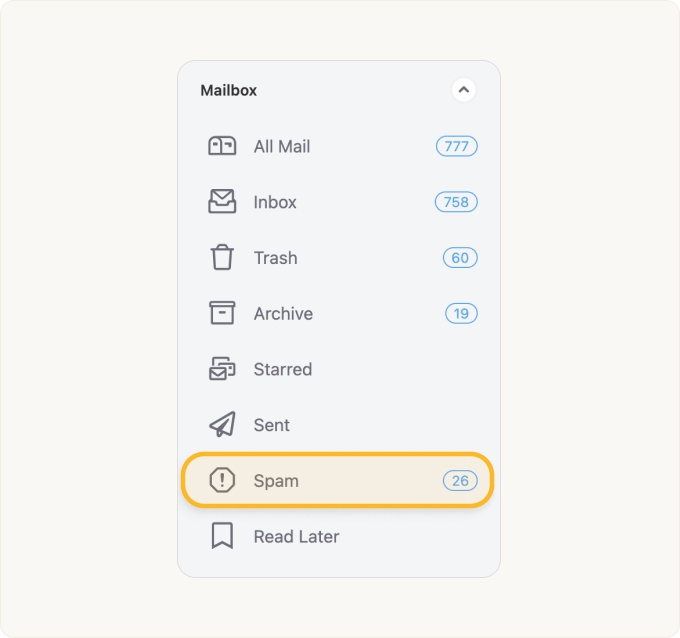
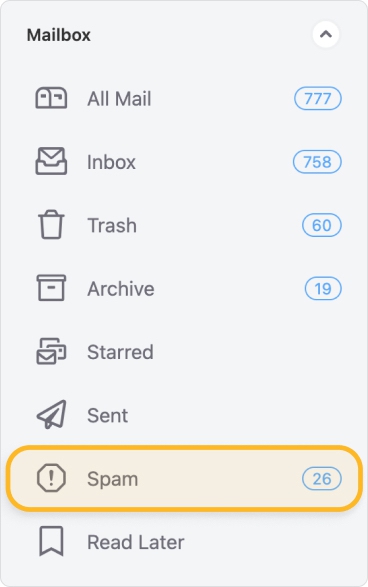
The Spam folder contains messages that have been marked as junk or spam by your email provider (e.g., by Google or Outlook). Each time your email provider identifies a new message as junk or spam, your provider automatically moves the message into the Spam folder. The messages that appear in the Spam folder in Clean Email are the same ones found in the Spam folder (or similar) in your regular email client.
📌 Note: In Clean Email, you cannot move messages directly into the Spam folder.
When viewing the contents of the Spam folder, the cleaning actions available are limited.
Sender Settings
When you click Settings for a sender in the Spam folder, a limited version of the Sender Settings dialog appears.

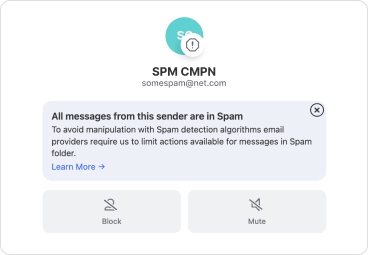
The only options available here are Block and Mute. When you click the drop-down next to the Settings button for a sender, the same options appear, with the addition of the Create Rule menu option.
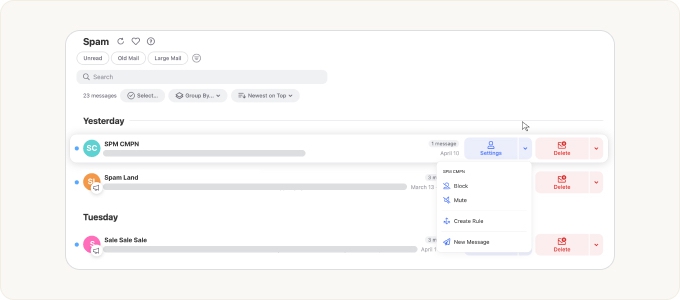
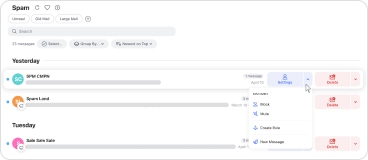
- Blocking a sender directs Clean Email to deliver all future messages from that sender directly to the trash.
- Muting a sender allows the sender’s future messages to be delivered, but Clean Email automatically marks them as read so they do not appear as new messages.
- For more information on Blocking and Muting, please see Sender Settings.
- For more information on the Create Rule option, please see Creating an Auto Clean Rule for Spam, below.
Deleting Spam Messages
When you click Delete for a group of messages in the Spam folder, a confirmation dialog appears.

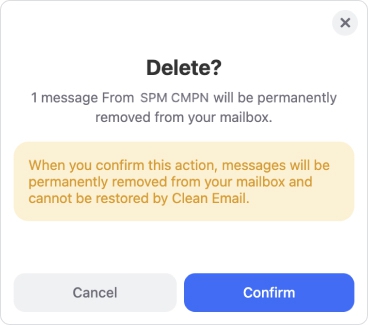
You can click to confirm or cancel the deletion. Notice that this does not move the group of messages to the trash–instead, they are permanently deleted.
If you click the drop-down next to the Delete button for a group of messages in the Spam folder, an additional option appears.
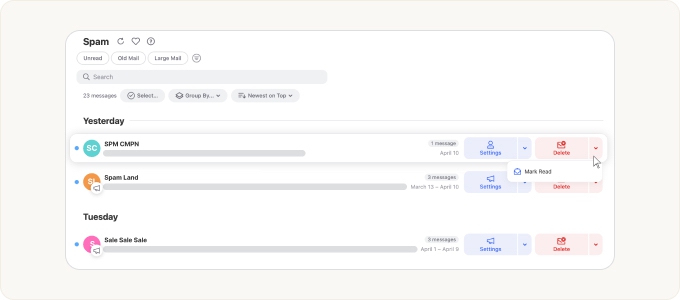
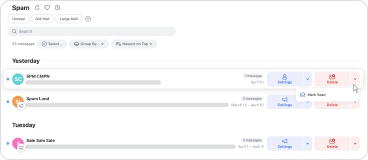
You can click Mark Read to mark the group of messages as read, so they no longer appear as new messages in Clean Email or your regular email client. When you click Mark Read, the Mark Read? dialog appears.
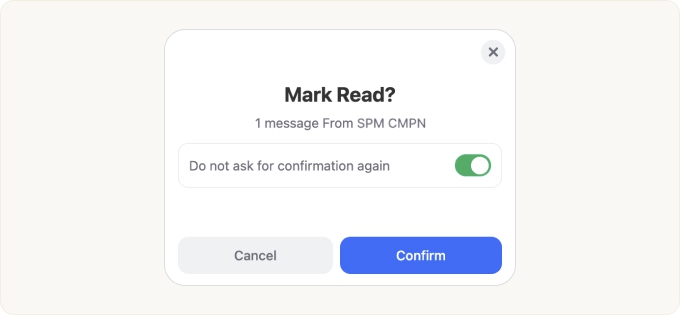
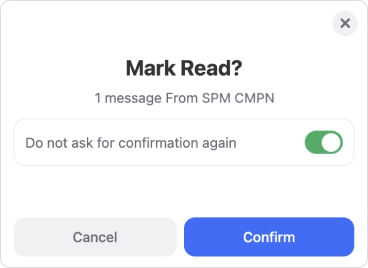
Click Confirm to mark the messages as read/as not new messages. The messages will remain in the Spam folder until you or an Auto Clean rule deletes them.
Creating an Auto Clean Rule for Spam
Clean Email can help you keep the Spam folder clean by automatically cleaning messages in the folder. For example, you might want to automatically delete spam messages after they have been in the folder for a few days, to allow you time to catch messages that your mail provider might incorrectly identify as spam, and mark them as non-spam messages in your regular email client.
📌 Tip: You cannot recover messages from the Spam folder in Clean Email. To do so, please use your regular email client.
To create an Auto Clean rule to automatically handle messages in the Spam folder, start by clicking Auto Clean in the left-hand navigation menu.
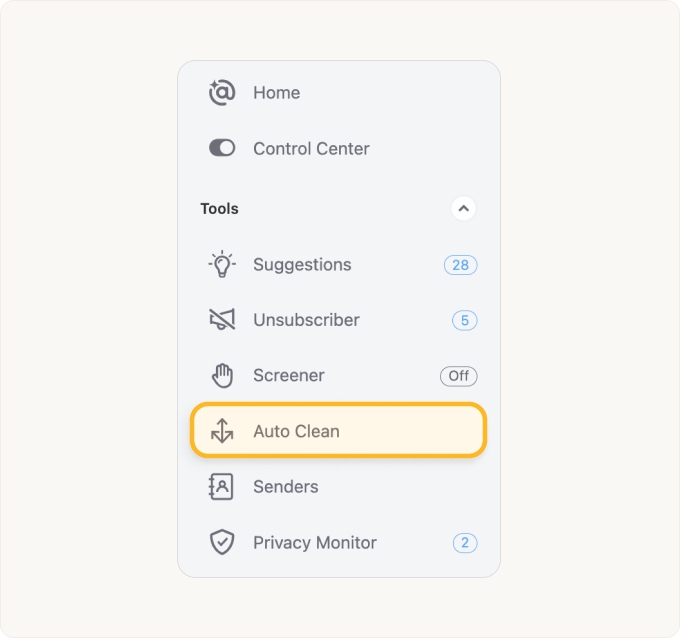

At the top of the Auto Clean page, click the plus button (+) to create a new rule.


In the Auto Clean rule creation dialog, click the Inbox folder and choose Spam from the drop-down list.
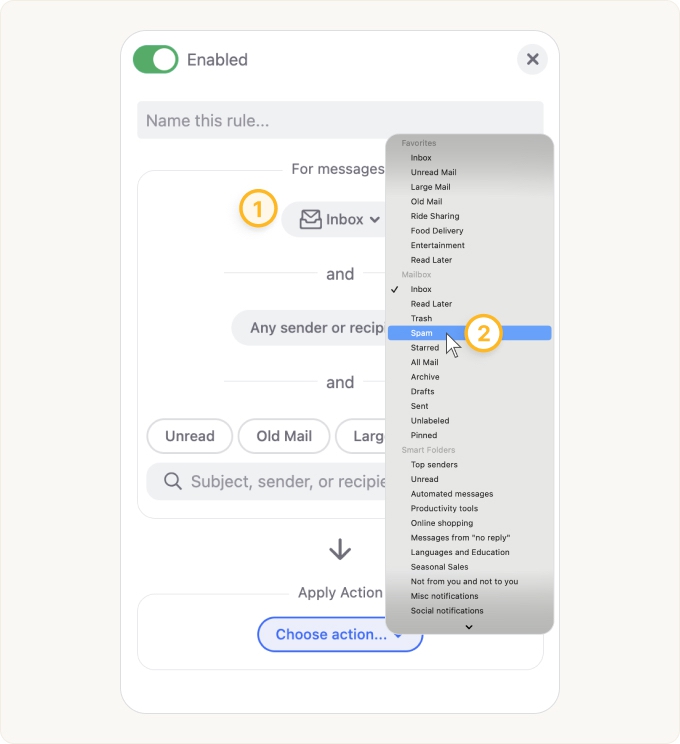

Next, click Old mail.
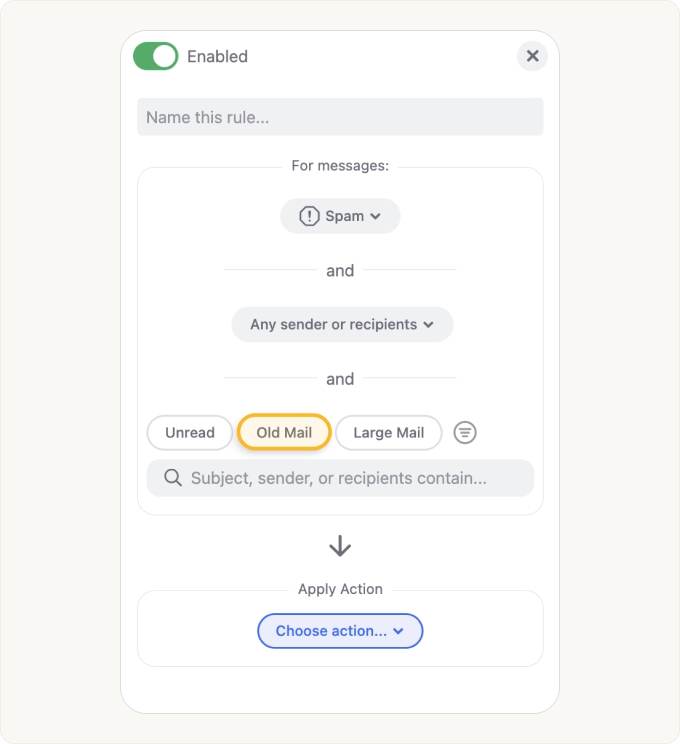
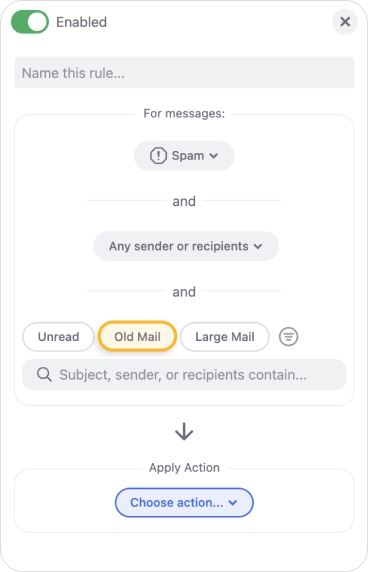
Then, click the default value of Older than 6 months and choose the desired age of spam messages to be deleted. Clean Email suggests selecting 3 days or 5 days.
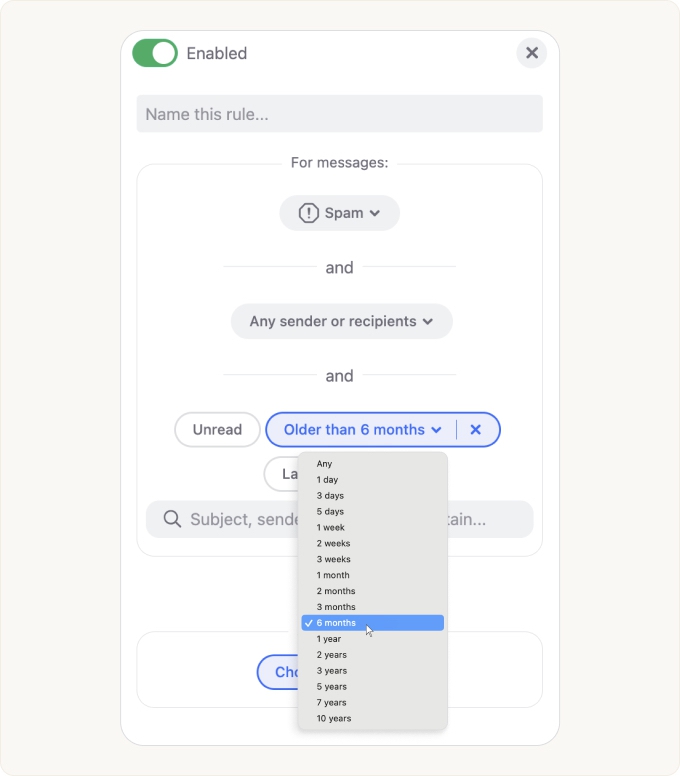
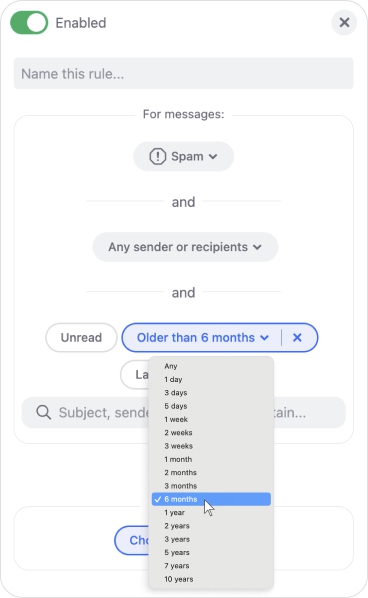
Now, click Choose action and then click the cleaning action you want Clean Email to take for messages in the Spam folder that meet the age criterion: Delete or Mark as Read.
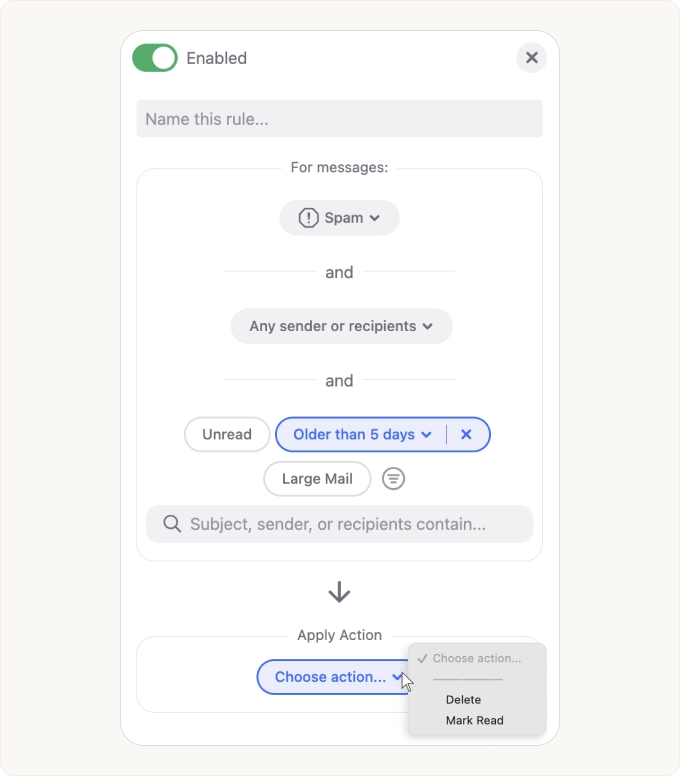
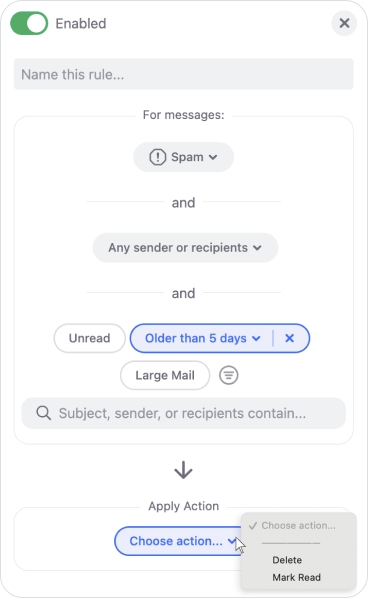
Two new options appear:
- If you want cleaning actions performed by this rule to be included in the Automated Actions History notifications, leave the toggle switch labeled Include this rule in Action History selected. Or, click the toggle switch to turn it off if you do not want this rule included in Automated Actions History notifications.
- If you want to immediately apply the rule to any messages that meet the criteria (e.g., messages older than 5 days old in the Spam folder), click to enable the toggle switch labeled Apply to existing messages.

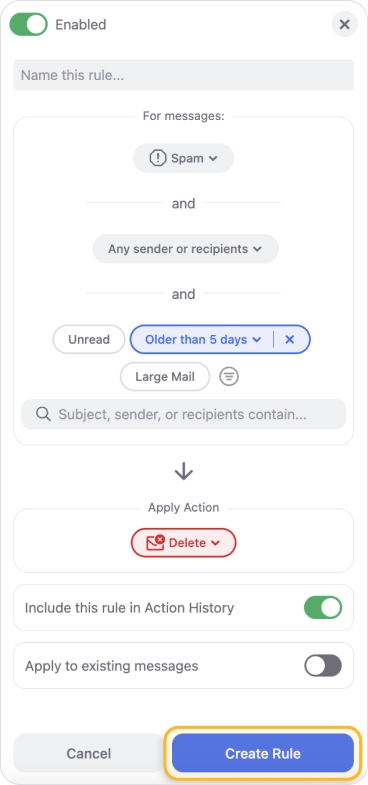
Click Create Rule when you are finished configuring the Auto Clean rule. For more information about Auto Clean rules, please see Auto Clean Overview.
Please contact us and we will be happy to help.